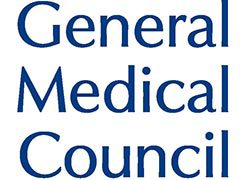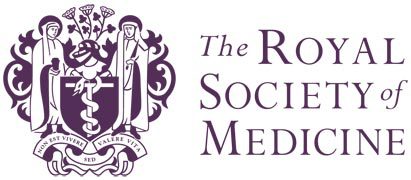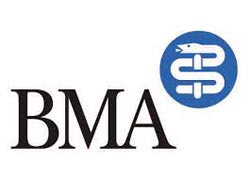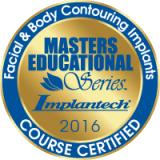Tummy Tuck

A Tummy tuck, technical name abdominoplasty, can dramatically reduce the appearance of a protruding abdomen, increasing comfort, range of movement and confidence levels by restoring abdominal tone. Tummy tuck is the most effective procedure in body contouring because it allows to reshape different anatomical planes. This includes muscle and the flank tightening, reducing fat volume and finally, eliminating excess skin, creating a “gown effect” possibly with stretch marks.
Tummy tuck can be selected to address any of the above problems individually or all at once. It is performed under general anaesthesia and requires very careful assessment as a major surgical procedure. Why choose abdominoplasty?
- Read More
Dr Cotrufo performs abdominoplasty under general anaesthesia. His patients are usually invited to stay in hospital for one or two nights for safety and comfort. Technical refinements such as deep-fascia suturing and use of dissolvable stitches allow him to achieve excellent results with very fine scars over the groin and around the “new belly button”. There are several techniques to perform a Tummy Tuck and Dr Cotrufo will advise you on the safest and best procedure to achieve your ideal shape.
If your abdomen has been affected by a cycle of weight gain and loss, impacted by pregnancy, ageing or loss of skin laxity, abdominoplasty surgery (tummy tuck) may be an option.
A tummy tuck reduces the appearance of your abdomen through removal of excess skin and fat. The possibility to tighten the anterior abdominal muscles (recti abdominis muscles) and repair divarication of the muscles typically after multiple pregnancies makes the tummy tuck one of the most common procedures for women. We estimate that Dr Cotrufo performed 90% of his tummy tuck procedures on female patients after one or multiple pregnancies, while the remaining 10% comes following massive weight loss on both sexes. Our patients often find that Dr Cotrufo’s body contouring procedure helps them to feel more content, giving them the self-confidence to wear the clothes they always wanted to wear. The most amazing consequence of body contouring surgery is that patients feel so comfortable again to start taking good care of themselves and reach a much better lever of fitness by exercising and dieting.
WHAT CAN ABDOMINOPLASTY ACHIEVE?
-
Restore tummy tone after weight gain and weight loss
-
Remove stubborn excess skin or fatty deposits from the abdominal wall
-
Shape and tone the belly after pregnancy
-
Can help ease lower back pain and improve posture
WHAT ARE THE ALTERNATIVES TO ABDOMINOPLASTY SURGERY?
If your fat deposits and areas of loose skin are largely below the navel, you may select to undergo a less complex procedure called a partial abdominoplasty or mini-tummy tuck.
Few young patients resistant to weight gain often need minor skin reduction along with repair of muscle divarication (diastasis of the recti) and with minimal skin reduction: they are also excellent candidates for a mini tummy tuck.
Umbilical hernias are common problems after pregnancy and they certainly represent contraindications for liposuction. A complete or mini tummy tuck procedure allows repair of the hernia, along with diastasis of the recti muscles with minimal skin reduction and repositioning of the belly button exactly where it is supposed to be.
Another option is to have abdominoplasty alongside liposuction for improved body contouring or to undergo liposuction on its own. From your first consultation, Dr Cotrufo will be very careful while taking you through all the possible options best suited to your goals.
BEFORE YOUR ABDOMINOPLASTY CONSULTATION
Clear communication between yourself and your plastic surgery team are vital for a relaxed and comfortable surgery experience. You need to feel sure about safety well before your surgery.
Dr Cotrufo always invites his patients for at least two consultations before any surgical procedure to make sure everything is clear. The targets are agreed in writing and patients are fully aware of the possible risks and complications associated with this tummy tuck.
DURING YOUR CONSULTATION, YOU WILL:
-
Be able to discuss your circumstances
-
Be given time to ask advice and pose questions to Dr Cotrufo
-
Undergo a health evaluation
-
Have a full assessment of your skin tone and the fat deposits and/or loose skin in the abdomen area
-
Discuss the options that are open to you, including costs and timescales
-
Ask about risks, benefits and alternatives to abdominoplasty
-
Learn more about the tummy tuck procedure
In the run-up to your procedure and in the days immediately before surgery, you may be asked to make small changes to your lifestyle and to avoid certain medications or activities.
This may include:
-
Taking a blood test or other medical tests
-
Stopping smoking
-
Refraining from drinking alcohol
-
Adjusting or stop taking certain medications
-
Avoiding aspirin, herbal supplements and anti-inflammatory drugs
-
Avoiding overexposure in the sun, particularly to the abdomen
-
Committing not to make stringent dietary changes
If you need a general anaesthetic for your procedure you will be given instructions on how to fast before your surgery.
THE ABDOMINOPLASTY/TUMMY TUCK PROCEDURE
-
Depending on the complexity of your personal procedure, a tummy tuck will commonly last between 2 and 3 hours
-
The steps of the surgical procedure will vary if you are also undergoing other treatments such as liposuction.
-
To do this, your surgeon will make incisions from hipbone to hipbone and to free the navel from surrounding tissue.
-
Incisions are usually made at the level of the underwear line in order to conceal any possible scarring.
-
Your abdominal muscles may also be tightened during the procedure.
-
Once the incision(s) is stitched, dressings are applied and temporary tubes is inserted to drain excess fluid away. They are usually left in place for about 3 to 7 days.
THE PARTIAL ABDOMINOPLASTY/MINY TUMMY TUCK PROCEDURE
-
A mini tummy tuck procedure will generally last between 1 and 2.5 hours
-
During a mini tummy tuck, a shorter incision is made and the navel usually remains in place, though it may be reshaped when the skin is tightened and stitched
-
If no muscle repair is needed above the navel, the skin is separated only between the incision line and the navel. This skin flap is stretched down, the excess removed and the flap is stitched back into place
-
If diastasis of the recti needs to be repaired above the belly button, the options are either to mobilise the belly button along with the abdominal skin flap (with no extra scars) and possibly lowering the belly button OR to leave the navel in its original position and create a new “opening” around it (with a new scar). This last option of “repositioning of the belly button” is obviously more complex to understand and Dr Cotrufo recommends discussing this carefully at consultation more than once until things are completely understood.
AFTER YOUR TUMMY TUCK
Once your procedure is complete, you are likely to feel bruised, swollen and sore, and you may find you have a drip in your arm to maintain hydration. You should be up and about in 24 to 48 hours. We advise to have a friend or relative to drive you home to help you after your tummy tuck for at least one week. Most patients are up and about within 2-4 days, but the statistics show that some patients take up to 7-10 days to be completely autonomous. This is completely unpredictable and this is why Dr Cotrufo recommends having assistance for at least 7 days after your tummy tuck.
After this:
-
You will be able to remove the small drainage tubes inserted during surgery once fluid production reduces. Usually 3-7 days.
-
Moderate pain and discomfort is likely for 3 to 5 days.
-
You should be able go in shower with warm water after the drains are removed. Until then, you can use wipes to clean your skin.
-
During the healing process, you will need to dress your wound as instructed by the clinic team.
-
You will be able to return to normal activities after 2-4 weeks but should continue to avoid strenuous exercise of all types for up to 6 weeks.
-
Most of the swelling should subside within 4 to 6 weeks, though it may take up to 3-6 months for the area to return to its final texture.
-
A series of aftercare appointments will be scheduled for you to attend, usually at week 1, 3 and 6, and 3 months, 6 months and 1 year. Dr Cotrufo will also be available to discuss your progress via telephone.
DO YOU HAVE ANY MORE QUESTIONS ABOUT ABDOMINOPLASTY?
There are a number of differences between a mini tummy tuck and a full abdominoplasty, if you would like to learn more about these variances or what type of procedure is most suited to your personal circumstances and goals, Dr Cotrufo will be able to guide you through this decision-making process. Should you have any further questions about tummy tuck, you can book a consultation by calling our clinic on 0207 873 2330.
Arm Lift
An arm lift surgery, technical name brachioplasty, aims to reshape your arms to help them look more proportionate. It can be carried out on the upper or underarm region. Dr Cotrufo has extended experience in most techniques to reduce arms volume and improve their shape. Dr Cotrufo also combines VASER Liposuction with excision of skin excess to achieve the best arm lift.
Why choose arm lift surgery?
Fluctuations in weight and the effects of ageing can result in excess fat and sagging skin on both the upper and lower arm areas. Brachioplasty reshapes the arm, giving a more regular and toned appearance.
- Read More
WHAT CAN AN ARM LIFT ACHIEVE?
-
Reduce stubborn fat deposits in the arm
-
Improve the sagging appearance of skin around the arm
-
Reshape arms to look more in proportion, particularly after weight loss and gain
IS THERE AN ARM LIFT ALTERNATIVE?
Your surgeon will be best able to advise on the surgery most appropriate for your goals, however, depending on your individual circumstances you may find liposuction or a combination of liposuction and arm lift surgery may be another course of treatment open to you.
WHAT TO EXPECT BEFORE ARM LIFT CONSULTATION?
Establishing good communications between you and your surgeon will help make for a comfortable and relaxed surgery journey. This begins with your consultation when you will have the opportunity to spend time talking to Dr Cotrufo.
DURING YOUR CONSULTATION, YOU WILL:
-
Be able to explain why you are seeking arm lift surgery
-
Have the opportunity to pose questions to Dr Cotrufo
-
Undergo a full health evaluation
-
Learn more about the procedure, including aftercare
-
Have a full assessment of your arm area(s)
-
Discuss the options that best suit your needs, including arm lift costs and timescales
As your surgery gets closer, you may be asked to make small changes to your day-to-day life or to avoid particular medications or activities.
This may include:
-
Taking a blood test or other medical tests
-
Stopping smoking
-
Adjusting or taking certain medications
-
Avoiding aspirin, herbal supplements and anti-inflammatory drugs
-
Refraining from drinking alcohol
-
Avoiding sun overexposure
-
Committing not to make stringent changes to your diet
Those undergoing general anaesthetic will be given fasting instructions to follow.
THE ARM LIFT PROCEDURE:
-
Arm lift surgery normally takes about 2 hours though it could take more or less time depending on the extent of the work and whether it is being combined with other procedures
-
Small incisions are made in an inconspicuous location on your arms and fat is then drawn out, liposuction may be used and excess skin may also be removed
-
The arm is smoothed and secured in place with sutures
AFTER YOUR ARM LIFT SURGERY:
Following surgery, you may be required to stay overnight in the clinic. We recommend that a friend or relative drives you home.
After that:
-
You should be able to return to work 1-2 weeks after your procedure
-
You will attend free aftercare appointments with Dr Cotrufo and be able to speak to him should you have any questions
-
You should start walking around as soon as possible
-
Sutures are usually self-dissolving so there is no need to struggle after your arm lift
-
Bruising will subside 7-14 days after surgery
-
Vigorous exercise, sun exposure and hot and spicy food should be avoided for around 1 month
-
Your scars may be more noticeable for the first 3-6 months while they heal, they will start to flatten in colour after 6-9 months
STILL HAVE QUESTIONS ABOUT ARM LIFT SURGERY?
Our clinic’s surgeon Dr Cotrufo has worked in some of the best plastic surgery hospitals in the world and is a regular contributor to plastic surgery journals including the Journal of Plastic Reconstructive and Aesthetic Surgery.
Should you have any questions about brachioplasty, your suitability for the surgery or the treatment and aftercare you can expect to receive with us, please call 0207 873 2330 to organise a consultation.
Thigh Lift
Thigh lift surgery helps to re-shape your thighs, to gain smoother looking skin, and to give them a more proportionate appearance to the contours of your lower body. This procedure is often chosen by patients after massive weight loss and bariatric patients. Thigh lift surgery represents the only solution for patients with excess skin that will not contract on its own. This procedure is also recommended for those patients who had liposuction with residual skin laxity.
Why choose thigh lift surgery?
Growing older and fluctuations in weight are the most common reasons for our thighs and skin appearing droopy and saggy. If you feel self-conscious and lack confidence in the appearance of your thighs, this surgery can help by removing excess skin and fat to give a firmer looking and more toned thigh area
- Read More
WHAT CAN A THIGH LIFT ACHIEVE?
-
Improve the shape of your thighs
-
Smoother looking skin
-
Put the contours of your lower body more in proportion
-
No more sagging and drooping skin
-
Confidence in the appearance of your upper legs
WHAT ARE THE ALTERNATIVES TO A THIGH LIFT?
Your surgeon will speak with you about possible alternatives to thigh lift surgery such as liposuction, which, in some cases, may be performed alongside or instead of a thigh lift. Thigh lift surgery can be combined with Extended Abdominoplasty as a Body Lift Surgery.
BEFORE YOUR THIGH LIFT PROCEDURE:
Every thigh lift surgery is different and tailored to the needs of the individual patient, that’s why establishing good communication between you and your surgeon is essential. A relaxed and comfortable surgery experience starts with open discussion of your personal goals within your thigh lift surgery consultation.
DURING YOUR THIGH LIFT CONSULTATION, YOU WILL:
-
Have the opportunity to ask Dr Cotrufo questions about the details of the thigh lift procedure
-
Highlight your reasons for seeking surgery
-
Complete a full health evaluation and lower body examination
-
Discuss the surgical and non-surgical options that are open to you, as well as costs and timescales
To make sure you are in the best health before your thigh lift, the surgeon may ask you to make some vital lifestyle changes in the run up to surgery. This can include:
-
Stopping smoking
-
Stopping alcohol consumption
-
Refraining from any stringent diets
-
Adjusting or stop taking certain medications
-
Avoiding aspirin, herbal supplements and anti-inflammatory drugs
-
Avoiding overexposure to the sun, especially to the thigh area
THE THIGH LIFT PROCEDURE:
-
The surgery normally takes around 2 hours but this depends on the extent of work required
-
Your surgeon will generally make incisions in the groin, extending downwards and wrapping around the back of the thigh, so that any scarring is as hidden as possible
-
The underlying tissue will be reshaped and tightened, with the reduced skin secured by sutures
AFTER YOUR THIGH LIFT SURGERY:
You are likely to feel tired and sore for a few days following your surgery, but you should be up and around in 24 to 48 hours and able to return home with a friend or relative.
-
There may be a drip in your arm to keep you hydrated after surgery. As soon as you can drink enough it will be removed
-
All drains and sutures are usually removed within 10 days after your surgery
-
You may shower with mildly warm water on the second day after your operation and if you need pain relief
-
You may notice some bruising around your lower body, which is to be expected, and will subside in about 7-14 days
-
It is best to avoid these foods and activities for at least a month:
-
Hot and spicy food
-
Vigorous exercise
-
Activity that is more strenuous, including housework
-
Heavy lifting
The results of the thigh lift surgery are visible almost immediately afterwards. However, it will take several months for the final results to fully develop. During this time, you will attend scheduled aftercare appointments with Dr Cotrufo, who will closely monitor your post procedure progress.
STILL HAVE THIGH LIFT QUESTIONS THAT YOU’D LIKE ANSWERED?
Dr Cotrufo is an expert in plastic surgery and reconstructive microsurgery. His extensive plastic surgery experience spans several continents and includes some of the UK’s leading plastic surgery departments.
Should you have any more questions about the thigh lift procedure, please call 0207 873 2330 to organise a consultation.
© 2023 Dr Stefano Cotrufo | All rights reserved
© 2023 Dr Stefano Cotrufo | All rights reserved







